As an Amazon Associate I earn from qualifying purchases.
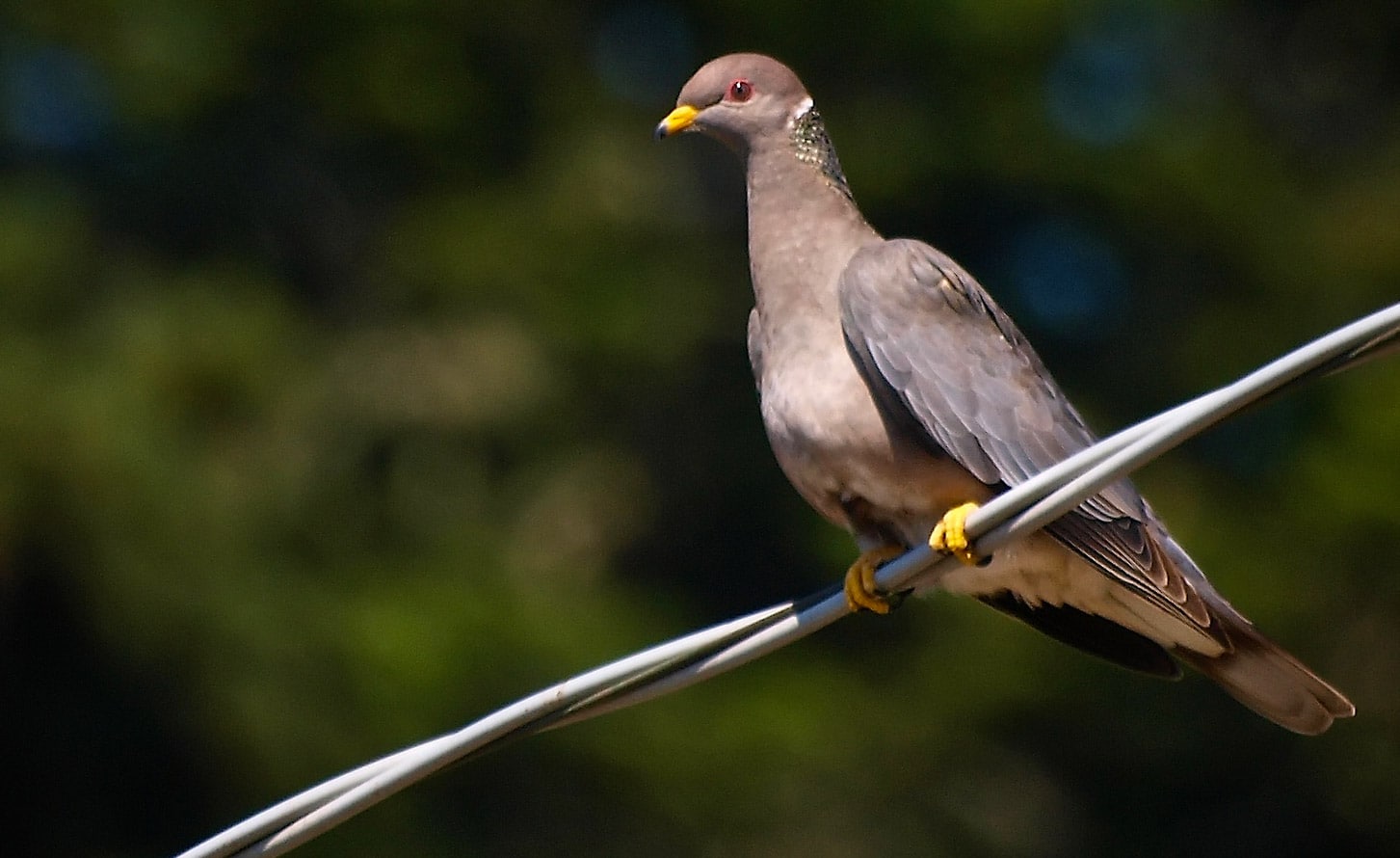
Dakota and I ambled down the logging road, grand fir, ponderosa pine, and the occasional black oak lining our path, which led gently down a slope in the Sierra Nevada, some miles from the little town of Quincy.
We chatted amiably, getting to know each other; we’d just met. Dakota knew where some band-tailed pigeons lived, and I desperately wanted to get a hunt in during the birds’ impossibly short September season.
Just then a big bird, backlit by the afternoon’s fading sun, roared over our heads like a corsair. Too late I saw it, raised my shotgun and squeezed off two shots. Dakota was even later, and his salvos missed, too. The bandtail flew on, unscathed.
“Well, he said. “At least we saw one.”
True, and that’s better than seeing none. But I’d hoped to shoot a brace that afternoon, the legal limit, and then another brace the following morning. Now you might be asking yourself why on earth would I drive three hours, each way, to chase a bird that, plucked and ready to roast, weighs less than a half-pound, with a bag limit of two and a season of barely more than a week?
And, after all, you’re thinking, it’s just a pigeon. Just a pigeon…
“Rats with wings.” Dirty animals. Vectors for disease. It was a New York City parks commissioner who coined the term “rats with wings” back in 1966. If he’s still alive, he deserves to be slapped. The 1960s, when dubious links between pigeons and disease began to capture popular imagination — and imagination it is, considering that the Centers for Disease Control has linked fewer than a handful of human illnesses to contact with pigeons — mark the nadir of the pigeon’s status in the human mind.
Not that they enjoyed much of a reputation earlier. Exhibit A, the passenger pigeon, one of the very few North American animals hunted to extinction. To be sure, habitat loss really did in the passenger pigeon — they needed old growth forests, which we cut down mercilessly — but unrestricted hunting for the commercial market clipped their wings for good.
All of this is odd considering that pigeons were the first bird humans domesticated, roughly 5000 years ago. And pigeons, notably homing pigeons, have been valued comrades for centuries. The most famous being the pigeon Cher Ami, who, even though horribly wounded by German gunfire, saved a battalion of American troops in World War I by getting a message through to headquarters, all at 60 miles per hour. She survived for more than a year after being shot through the breast, losing an eye and part of a leg.
This last bit of information gives you some idea why I love hunting pigeons so much. That pigeon flying over Dakota and I was cruising about 50 miles per hour. A freaked out bandtail can hit 90 miles per hour. That makes them the fastest game bird in North America by far.
Pigeons can also take an enormous amount of punishment, as anyone who’s ever hunted them knows. The morning after our brief encounter with that lone bandtail, I managed to hit a crossing pigeon, rocked it, knocked three feathers off it… only to see it fly off, seemingly fine. It’s the last time I will ever shoot steel No. 7s at a pigeon.
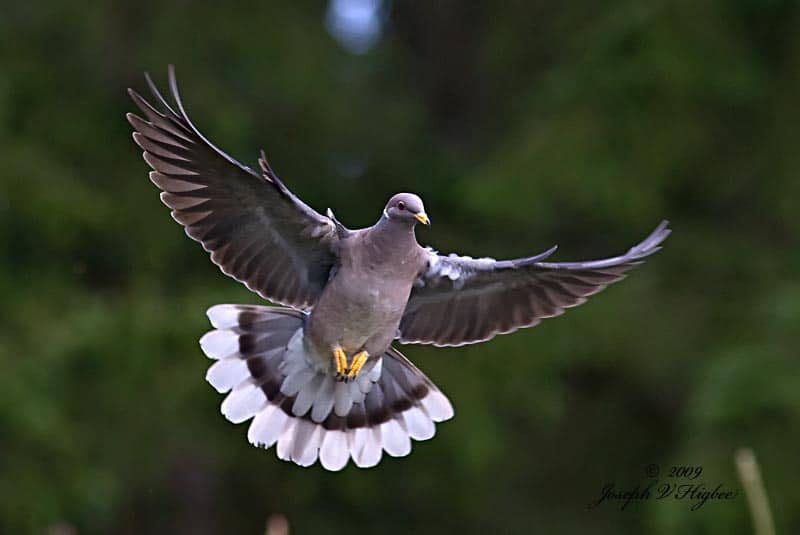
But pigeons, band-tailed or common, are more than just a challenging target. They are wonderful at the table.
Bandtails primarily eat acorns, other nuts (notably pine nuts), various berries (dogwood, elderberry, California coffeeberry, etc.), and, in some places, waste grain. Common pigeons also love seeds, and when shot in the country, usually near cattle ranches or dairies, they too will be full of grain. Good eats.
Culinarily speaking, pigeon — squab is a farmed young pigeon — is a dark meat bird, usually quite lean. Basically a giant dove. Yet I know scores of dove hunters who would never eat a pigeon. Madness.
Tell the average American you eat pigeon and they’ll get all squinchy. Ew! You eat… yeah, you guessed it, “flying rats.” I have little patience for these people. But I’m the minority, not them. There is an almost universal disdain for pigeons. Look up pigeon recipes and you’ll see only the French, English and North Africans eating them with any regularity. I bet the Chinese do, too.
I suspect this attitude has a lot to do with familiarity breeding contempt.
City folk deal with masses of pigeon shit and urban myths about disease. And, well, very true images of pigeons pecking at unsavory morsels. As I like to note, I eat country pigeons that eat grain, not city pigeons with Doritos and cigarette butts in their crop.
Rural people see them as uninvited residents of their barns and farms, as they rain down guano on their farm equipment, cattle and Carhartts.
Everyone sees pigeons all the time. A huge flock owns the intersection of Madison and Sunrise avenues, a few miles from my house. I see them chillin’ and cooin’ every time I’m at that stoplight. They live with us, which makes sense. After all, we brought the common pigeon to North America.
But band-tailed pigeons were here first. And hunting them, in their natural habitat, is utterly dissonant from our experiences with the common “rock dove.”
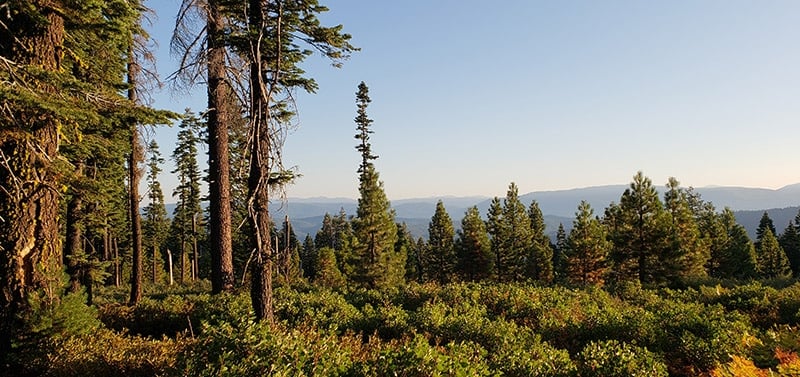
Bandtails live in wild places. They will often be the only pigeon-like bird you will see in that environment. Sure, sometimes they come to backyard feeders, but bandtails prefer places like California’s High Sierra, where Dakota and I were hunting.
Vistas of nearby 10,000-foot peaks surround you. The whisper of wind in the pines mingles with the droning of Clark’s nuthatches, the chitter of chipmunks and Douglas squirrels, the liquid murmurings of mountain quail, and the occasional twig-snap of an unseen deer. The breeze carries the husky aroma of a dozen kinds of conifer, and, as you walk the logging roads, neck craned high, you pass into a shadow and shudder from the first chill of winter, still months away.
Dakota and I split up that second morning. We parked his battered old Toyota Tacoma next to an old clear cut and went in opposite ways.
Thirty minutes later, after a half-hearted attempt to stalk a Douglas squirrel, I headed back toward the truck. As soon as I got there, I saw a flock of six bandtails cruising over where I presumed Dakota was standing. No shots. Guess he wasn’t there.
But the birds were still flying. Tracking them was tricky. In a dove field, you can watch a bird’s flight from sight line to sight line. In the forest, those sight lines are broken constantly. Now you see the pigeons, now you don’t. I watched them slip off to my left, out of my life. I turned my attention to what I was certain was quail babble in a nearby patch of whitethorn and buck brush.
I jerked my head up at the roar of a squadron of six bandtails zooming directly over my head, from right behind me! I knew it’d be a hail Mary, but I shot anyway. No dice.
So this is bandtail hunting. Their suddenness, and their frustrating habit of perching at the top of 150-foot firs and pines — in full view but out of shotgun range — leads to a series of semi-desperate pass shots at extreme range that make the shooter feel poorly about himself immediately afterwards. Ask me how I know…
Dakota soon returned, empty handed as well. He suggested we move down the ridge a bit to where there was a little water trough that might still hold water. Pigeons will orient themselves to water sources, so it was worth a try.
As soon as we parked, Dakota spotted a pigeon resting on the top of a pine. We tried to stalk up to it, but it saw us and flew off, casually.
Back at the trough, there was another, closer this time. “Sonofa…” It, too, flew off lazily.
Out of the corner of my left eye I saw movement above. A nice flock of about 20-odd pigeons, swooping down toward the trough! Dakota and I shot at them but missed, scattering the flock. A few landed in a dogwood tree just about 100 yards up the slope. We stood there looking at them for a few minutes. I looked at my watch: Almost time to go.
I wanted those pigeons. Three hours of driving, each way, a night in a hotel and several miles of walking at altitude, scratches on my legs and ego bruises from poorly chosen shots all compelled me to make a stalk on those pigeons. So I did.
If you’ve never hunted the Sierra Nevada in September, you might have a hard time understanding how tough it is to stalk up on something. It hasn’t rained there since May. The world aches for moisture. Each step is like crushing a bag of potato chips. But step you must. So you walk arrhythmically, like a squirrel rooting for yummy things.
And you can’t do it too fast, or directly at the tree where the pigeons were cavorting. Keeping other trees between me and the dogwood, I crept closer. Dakota hung back, saying he’d shout if the pigeons flew off. He was quiet, so I kept on.
A pigeon. Hanging out, at the top of a small fir. A different pigeon. Not the dogwood pigeons. Where were they?
Who cares? I wanted a pigeon, and here one was. So yeah, I shot it out of the tree.
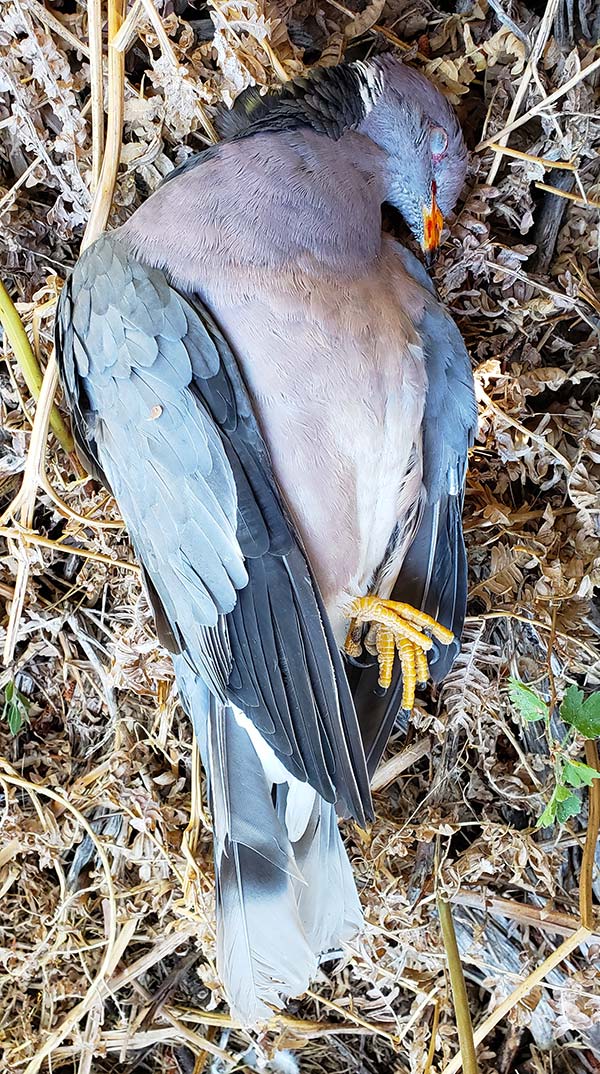
I am not overly proud of that, but I’d shot a grand total of two band-tailed pigeons in my life before, each more than a decade ago. All I remember about those birds were how wonderful they tasted. The fates had put one in my reach, and I took what they gave me.
I understand why bandtail limits are so low. Habitat loss is, as usual, the big culprit. The pigeons need oaks and fruit-bearing shrubs, especially in winter. And industrial forestry clears the undergrowth of both oaks and berry bushes to make room for more money-making conifers. The reason Dakota and I saw pigeons was because this stretch of forest had food, water, and shelter. The pigeon I shot was full of Pacific dogwood fruits.
Another reason why pigeon limits are low is because unlike doves, which are a fecund lot, pigeons normally only give birth to one chick at a time, maybe three times a year in fantastic years, but usually it’s just that one. This makes them like sharks, whose low reproductive rate limits how much pressure you can put on them.
And there’s another thing: Pigeons, no matter the species, are creatures of habit. They roost in traditional places, often in vast numbers. They fly in a certain way to feeding grounds, and especially to mineral springs, which they seem to love dearly. So much so, that in olden days, you could stand there and blast away at flocks of bandtails coming to the spring — and they’d keep on coming.
Back in the bad old days, gunners would shoot dozens of them, and authors like Worth Mathewson, whose Band-Tailed Pigeons: Wilderness Bird at Risk is the only book on bandtails I am aware of, report that in those days shooters would barely bother to pick their birds up after the hunt. Shameful.
Even today, pigeon hunting seems to be all about numbers. Peruse any of the many “pigeon guides” out there, and you’ll see images of scores, even hundreds, of dead pigeons, festering in the sun. Unregulated hunting of pigeons has doomed to the endangered species list our other extant native pigeon, the white-crowned pigeon of south Florida.
The more I think about it, the angrier I get.
A pigeon, any pigeon, is a remarkable game bird. It is faster than any other bird we hunt, tougher than most, and is a treasure at the table. Call it “squab” and people will happily drop $35 for an entree at a fancy bistro. But call it “pigeon,” and people start judging you and your life choices.
I am here to say that pigeons, especially our native band-tailed pigeon, ought to be as cherished as the mountain quail and blue grouse they live among. All three are symbols of the Sierra, of early autumn days spent hiking dusty slopes, ears tuned, neck craned, shotgun ready. They are hard-won birds, to be cooked with reverence.

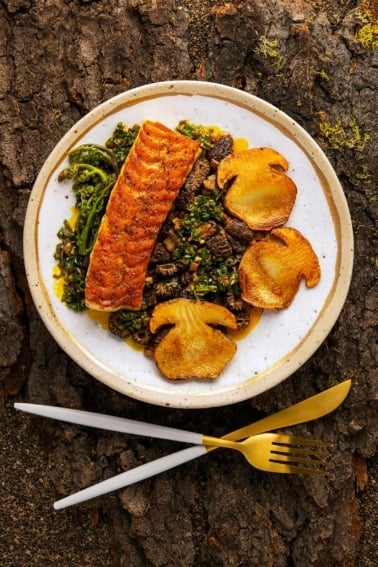
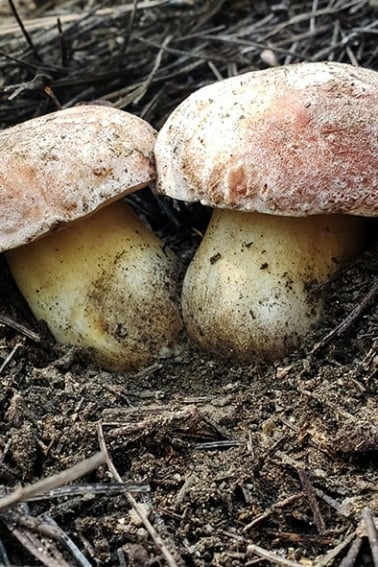
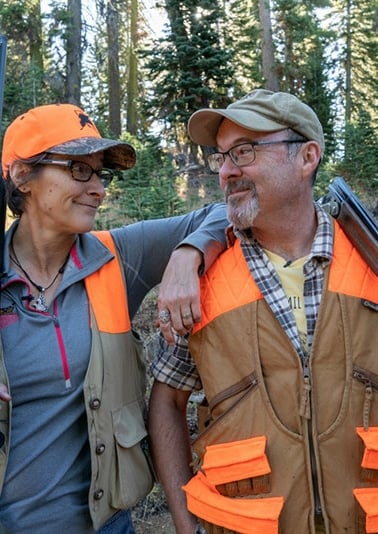
Years ago, a friend and I were called to cull rock doves out of a medical supply warehouse. We used Daisy pellet guns, and shot them at roost. We were young and dumb, and only pulled the breasts of them, but I still remember that meal fondly. It was like the best steak I’d ever had at the time.
Hank,
If you ever in Southern california during Band Tail season I will take you on a hike. My family and I really enjoy your books and recipes and would love to give back in some way.
They are delicious, fun to hunt, and a really pretty bird. Have you done any hunting for Eurasian Collared Doves yet? Another awesome bird on the table. I recently made Stroganoff using dove stock, morels, and Eurasian breast strips. I utilize the same recipe I use for beef in which I use the trimmings and scraps from breaking down a whole Beef Tenderloin.
It is much better with the dove and wild mushrooms IMO… And FWIW, You don’t wait for squirrels to fly before you shoot them out of a tree, why would shooting a bird for the table need an apology? After all, you can’t eat air…